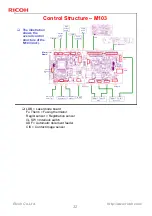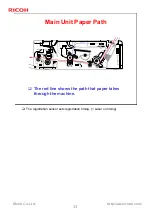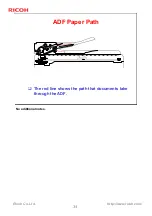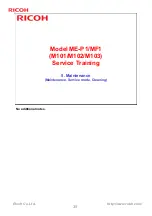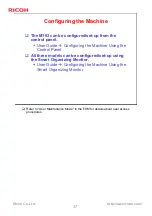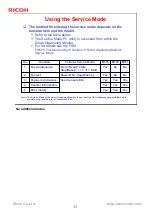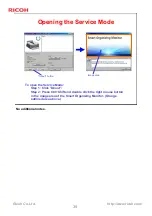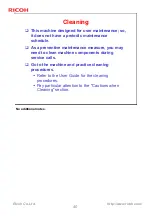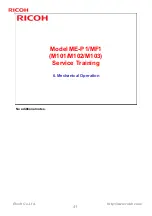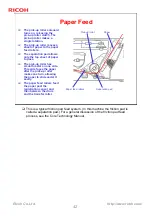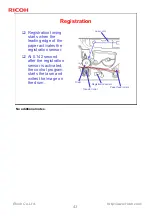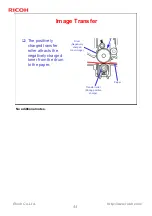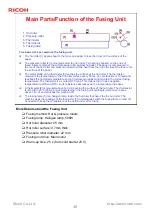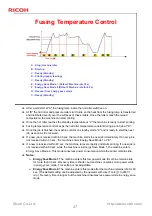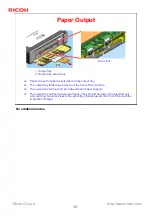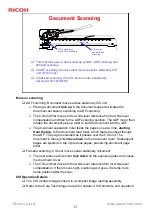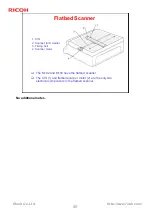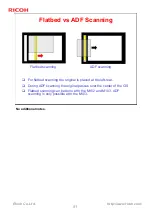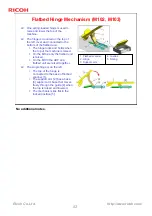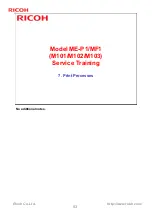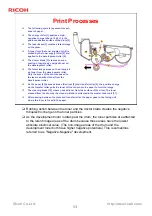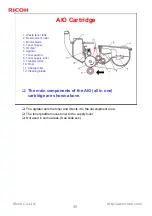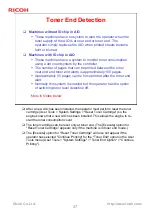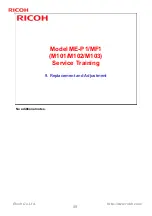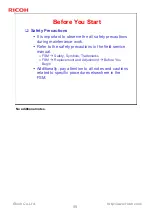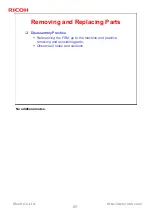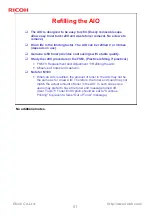
46
Ricoh Co. Ltd.
http://www.ricoh.com/
Main Parts/Function of the Fusing Unit
Five basic devices comprise the fusing unit:
The hot roller [1] applies heat to the toner and paper to fuse the toner on the surface of the
paper.
The pressure roller [2] is mounted below the hot roller. Two springs hooked on the ends of
these rollers compress the soft pressure roller against hot roller. The paper is compressed in
the nip of the hot roller and pressure roller when the heat from the hot roller fuses the toner onto
the surface of the paper.
The metal blade of the thermistor [3] touches the surface of the hot roller. The thermistor
measures the temperature of the hot roller surface every 50 ms. Its sole function is to read and
feedback the hot roller temperature so the firmware can adjust and maintain the correct fusing
temperature. The thermistor is a contact NTC type. This means that it has a negative
temperature coefficient (NTC) so its resistance decreases as the temperature increases.
A thermostat [4] is mounted above but not touching the surface of the hot roller. The thermostat
is rated for 143
°
C (289.4
°
F) and detects when the fusing unit overheats (temperature rises
above 143
°
C) and switches the machine off.
The fusing lamp [5] is a halogen lamp inside the hot roller that heats the the hot roller. The
machine uses the readings of the thermistor [3] to alternately switch the fusing lamp on and off
as needed to keep the temperature at the optimum level for fusing.
1. Hot roller
2. Pressure roller
3. Thermistor
4. Thermostat
5. Fusing lamp
More Details about the Fusing Unit
Fusing method: Hot & pressure rollers
Fusing lamp: Halogen lamp, 500W
Hot roller diameter: 25 mm
Hot roller surface: 0.7mm thick
Pressure roller diameter: 22 mm
Fusing unit drive: Main motor
Warm-up time: 25 s (from cold start at 23 C)

